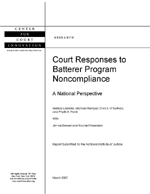 |
|
|
|
Virtual Library 2012 2011 Family Violence in Canada: A Statistical Profile, January 2011
Violence Against Women in Canada: Research and Policy Perspectives, Holly Johnson & Myrna Dawson Violence Against Women: Research and Policy Perspectives in Canada provides a comprehensive overview of the issue of violence against women in its Canadian context, including underlying theoretical explanations, empirical research, and an examination of legal and social policy responses to the problem. It thoroughly examines what lessons can be drawn from the volumes of accumulated research and evaluation literature in Canada, and elsewhere, and provides a complete picture of how far Canada has come in our response to crimes of violence against women, where our investments have taken us, and where we are heading. Oxford University Press. ISBN-10: 0195429818; ISBN-13: 9780195429817.
Family Violence in Canada: A Statistical Profile Readers can access any of the editions of this publication from here. http://www.statcan.gc.ca/pub/85-224-x/85-224-x2010000-eng.pdfhttp://www.statcan.gc.ca/pub/85-224-x/85-224-x2010000-fra.pdf 2010 Family Violence in Canada: A Statistical Profile, 2010 http://www.statcan.gc.ca/pub/85-002-x/2012001/article/11643-fra.pdf http://www.statcan.gc.ca/pub/85-002-x/2012001/article/11643-eng.pdf
Torn from Our Midst: Voices of Grief, Healing and Action from the Missing Indigenous Women Conference, 2008 Mary Rucklos Hampton, Wendee Kubik, A. Brenda Anderson Since 1980, more than 520 Aboriginal women have been reported missing or murdered in Canada. From 1993-2003, 370 women were murdered in Ciudad Juarez and Chihuahua, Mexico. Since 2001, more than 2,000 Guatemalan women and girls have been brutally murdered. Responding to the profound tragedy inherent in these statistics, more than 300 women and men gathered in August 2008 at a conference entitled Missing Women: Decolonization, Third Wave Feminisms, and Indigenous People of Canada and Mexico. Torn from Our Midst includes images and voices from the conference , together with additional reflections, both academic personal, on the effects of violence and the possibilities for healing. 2009
A National Portrait of Domestic Violence Courts
A National Compendium of Domestic Violence Courts
Family Violence in Canada: A Statistical Profile
A ROLLERCOASTER RIDE Their Experiences with and Views about the Criminal Justice Process in the ACT 2009 This report provides information principally derived from two studies involving a number of adults who had experienced a sexual assault and who had reported the incident to police in the ACT. The first component involved qualitative interviews with individual victims of sexual assault to ascertain in depth their views and experiences of the criminal justice process. The second involved the research participants answering questions about procedural fairness using a computer program specifically designed for a larger national research project.
“We Don’t Shoot Our Wounded…” Aboriginal & Torres Strait Islander Victims of Family Violence Access to Justice and Access to Services in the ACT. ACT Victims of Crime Coordinator, March 2009.
This research report comprises the first stage of the project and was completed in February 2008.
What’s Law Got To Do With It? The Law and Specialized Domestic Violence Courts in Canada.
Edited by: Ursel. J., Tutty, L., Lemaistre, J. (2008). Cormorant Press, Toronto. What’s Law Got To Do With It? examines changes in the Canadian justice system from the introduction of protection order legislation, to family law, to changes in criminal court procedures.
Domestic Violence Intervention Court Model (DVICM) evaluation Released: 21 May 2008 Efforts to improve the response of the criminal justice system to victims of domestic violence appear to have substantially succeeded, according to a report released today by the NSW Bureau of Crime Statistics and Research. The principal aims of the NSW Domestic Violence Intervention Court Model (DVICM) were to:
Community supervision and rehabilitation: Two studies of offenders on supervised bonds Don Weatherburn and Lily Trimboli February 2008 Convicted offenders are often subjected to some form of supervision to reduce the risk of further offending. To date, however, there has been no Australian research into the effectiveness of supervision in reducing reoffending. This bulletin presents the results of two studies.
|
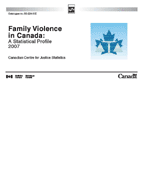 |
Family Violence in Canada: A Statistical Profile |
Family Violence in Canada: A Statistical Profile
Released October, 2008
Edited by Lucie Ogrodnik, Canadian Centre for Justice Statistics, Statistics Canada
This is a link to the annual Family Violence in Canada publication (English and French).
Readers can access any of the editions of this publication from here.
• English report
• French report
2007
Court Responses to Batterer Program Noncompliance: A National Perspective
|
Court Responses to Batterer Program Non-Compliance |
March 2007.
Melissa Labriola, Michael Rempel, Chris S. O'Sullivan, Phyllis B. Frank, Jim McDowell, and Rachel Finkelstein.
A study conducted in collaboration with VCS Inc. that examines how criminal courts respond when domestic violence offenders are noncompliant with a court mandate to a batterer program. The study, based on a national survey of courts, batterer programs, and victim assistance agencies in all 50 states, detected overwhelming support for the goal of "accountability" in theory but a gap between theory and practice, as most courts indicated that they do not always or often impose sanctions when offenders are noncompliant with the batterer program mandate.
http://www.courtinnovation.org/_uploads/documents/Court_Responses_March2007.pdf
 |
Family Violence in Canada: A Statistical Profile |
Family Violence in Canada: A Statistical Profile
ed October 11, 2007
Edited by Lucie Ogrodnik, Canadian Centre for Justice Statistics, Statistics Canada
This is a link to the annual Family Violence in Canada publication (English and French).
Readers can access any of the editions of this publication from here.
• English report
• French report:
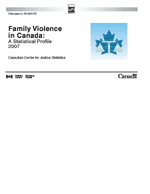 |
Family Violence in Canada: A Statistical Profile |
2006
Familiby Lucie Ogrodnik• English report:
• French report:
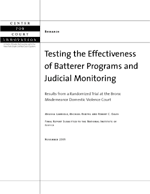 |
Testing the Effectiveness of Batterer Programs and Judicial Monitoring |
2005
Testing the Effectiveness of Batterer Programs and Judicial Monitoring
Results from a Randomized Trial at the Bronx Misdemeanor Domestic Violence Court
November 2005
By Melissa Labriola, Michael Rempel, Chris S. O'Sullivan, Phyllis B. Frank, Jim McDowell, and Rachel Finkelstein
A study conducted in collaboration with VCS Inc. that examines how criminal courts respond when domestic violence offenders are noncompliant with a court mandate to a batterer program. The study, based on a national survey of courts, batterer programs, and victim assistance agencies in all 50 states, detected overwhelming support for the goal of "accountability" in theory but a gap between theory and practice, as most courts indicated that they do not always or often impose sanctions when offenders are noncompliant with the batterer program mandate.
http://www.courtinnovation.org/_uploads/documents/battererprogramseffectiveness.pdf
|
|

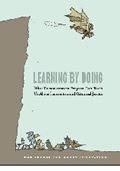
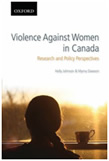
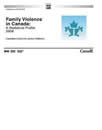

 June 2009.
June 2009.  June 2009. T
June 2009. T
